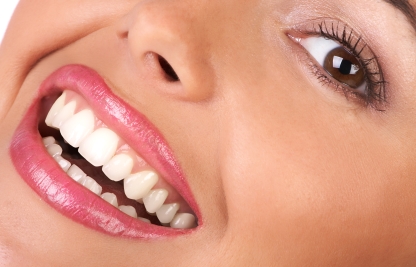People hoping for a whiter, brighter smile should be careful while using teeth whitening and bleaching products as they can cause permanent dental damage, Adriana Manso, a clinical assistant professor of dentistry at UBC said Wednesday.
What are your concerns about dental bleaching products?
Bleaching products can have multiple side effects such as damaging the dental enamel, causing irritation to the gums, tooth sensitivity and more. Some of these effects are lasting; for example the damage to the dental enamel is permanent and irreversible. There is also an obvious risk of overuse or abuse when applying over-the-counter bleaching products such as strips, paint-ons or trays. Nowadays, with so many over-the-counter bleaching alternatives available, people are tempted to buy and self-apply these products without properly understand the risks.
It is important to remember that dental bleaching is not recommended for everyone. I would always advise discussing bleaching with your dentist first. There are different reasons why a person’s teeth are discoloured or darker so the treatment options and results would also differ.
How does bleaching your teeth work?
Bleaching products contain hydrogen peroxide that diffuses through the enamel. It breaks down the compounds that are causing the discolouration, known as chromogenic compounds, and your teeth become lighter. Over-the-counter products like strips or gels usually contain lower concentration of hydrogen peroxide than bleaching products used only by dentists.
Bleaching products used by the dentist for in-office therapies can have higher peroxide concentrations of up to 40 per cent. The bleaching mechanism is similar but these therapies need to be well supervised and should only be used in the dentist’s office. Alternatively, dentists can prescribe supervised at-home bleaching therapies.
Some toothpastes and floss claim to whiten teeth and they work differently than bleaching products. They contain abrasives or tiny particles that work like sandpaper to exfoliate the surface of the tooth and remove the stains. This whitening process has a side effect too. If you use toothpaste that is too abrasive for a long time, you can remove superficial layers of your enamel.
How can you tell if you’re overdoing the bleaching?
There is a limit to how much you can bleach your teeth; the process will plateau and the peroxide doesn’t cause any further whitening. Instead, it breaks down the proteins of the enamel and alters its structure. Dentists use shade guides to verify the progress of the bleaching based on the patient’s initial shade and can determined when the bleaching reached the plateau. There are reports of significant enamel damage associated with over-the-counter bleaching products, most likely due to unassisted over bleaching.
Tooth sensitivity — meaning patients feel pain when they consume hot or cold drinks or food — is the most noticeable side effect of bleaching. It can be caused by multiple factors such as peroxide concentration, application time, and the presence of defective restorations and cracks or cavities. It is important to highlight that high sensitivity is not a good sign and the pain is your ‘red flag’ that something is going beyond the limits.
How often can you use whitening products?
Bleaching should not be done every year because the effects on your enamel are cumulative. People want whiter teeth for their graduation, their wedding and then their sister’s wedding and they do it year after year.
When a patient wants whiter teeth they need to consider whether they are willing to change their habits. Smoking and drinking coffee, tea and red wine are examples of habits that can cause discolouration. It makes no sense to have your teeth bleached if you are not willing to change your habits that cause discolouration. This only creates more demand for bleaching and leads to overuse of bleaching products.
Young patients like teenagers or young adults are more susceptible to the marketing for teeth whitening. They want a bright smile and sometimes they are not as concerned or aware about the side effects. Over-the-counter options are appealing as they are marketed as fast and low-cost alternatives to the public. Unfortunately, young patients are also the most susceptible to the side effects of bleaching products as their teeth are more permeable.
For a safe and successful tooth whitening treatment always consult with your dentist to learn about the best options and expectations for your case.
Agencies/Canadajournal/Press Releases
 Canada Journal – News of the World Articles and videos to bring you the biggest Canadian news stories from across the country every day
Canada Journal – News of the World Articles and videos to bring you the biggest Canadian news stories from across the country every day



